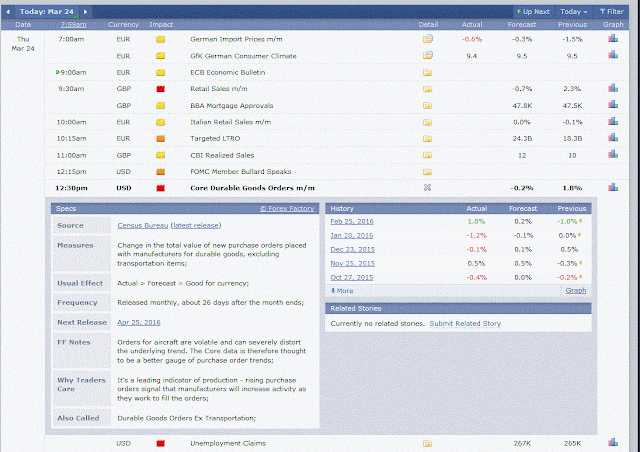Retail traders are these days very much aware of the different spreads that brokers offer but a surprising number are completely ignorant when it comes to the cost of carry, or swap rates that are charged when positions are held overnight. Whenever you hold a forex pair overnight you should earn the overnight interest on the long pair and pay the overnight interest on the short pair. This amount is deducted or credited to your account each evening on the New York close. For proper interbank trading the interest rates charged will be close to the actual prevailing rates in the market but for retail forex trading brokers are free to set their own rates. Typically they might make a spread around the LIBOR rate so if the EUR overnight rates is 3.0% (remember those days!) then you'd pay 4% if short and received 2% if long. Remember: there will be a similar spread on the other half of the pair being traded as well. It's amazing how much variation there is in swap rates between brokers. To compare you need to know what "swap points" are: this is the amount charged or credited in USD for holding 1 full lot (usually 100k units in Mt4) overnight. You can find out what your Metatrader broker is charging by going to the Market Watch window in Mt4, right-clicking on the symbol and selecting "Specification". This will bring up the contract specification window

In the example above for the broker LMAX you can see that you get charged a whopping 4.39 USD if you're long GBPUSD overnight and charged 3.69 if you're short. What's more, since spot transactions are for settlement in two days time, on Wednesday night your trade settlement will rollover to Monday the following week so you'll get charged for three nights rollover in one hit. Ouch!
Below are some swap rates taken from a few brokers for GBPUSD. When comparing different brokers it's worth checking what lot size they are assuming - these figure are all for 100k lots. You can see a more comprehensive comparison table (for 10k lots)
here.
LMAX -4.39 / -3.69
Axi Trader - 1.80 / -0.80
Pepperstone -2.26 / -2.03
GKFX -1.22 / -0.75
OandA -0.90 / +0.10
It's quite amazing the differences that exist between brokers. I know a few traders who state that in their opinion many brokers actually make most of their money from the overnight swap rates rather than the commission or spread as these overnight charges really do add up, especially if you're holding positions for a while.
Here are a few points to consider
1. For day-traders swap rates aren't an issue. If you've closed out all
your positions by the New York close then you won't be charged any swap
rate. The one exception to this is the broker OandA who along with their unique
"any position size trading" also have a unique "charge swaps or
roll-overs continuously" policy. What this means is that even if you're
only in a position for a few minutes you'll be charged, based on the
fraction of the full day you were in the position for. Fortunately
OandA's swap rates are pretty reasonable but it's something to bear in
mind
2. For position traders swap rates are a big deal. Whilst the charge for
one day may only be a pip or so, if you hold a position for a month
then this charge really adds up. Now in the good old days where interest
rates were a decent amount you could actually earn interest on your
position if you were positioned the right way on the right pair but
these days of ZIRP you're going to be charged every time. It's an
unfortunately but necessary part of trading but you do need to watch how
much you're being charged as in some cases the charges are quite a
blatant rip-off.
3. This swap / roll-over charge also applies to all futures markets.
However, in that case this is built in to the overall price as there is
no roll-over but instead a single expiry. You will find that each day
your futures contract will have gone up or down by a small amount
relative to the spot price. However, in this case the daily change will
be using the proper interbank interest rates. This does also mean that
if you're trading a CFD (e.g. Crude Oil) then there will be a daily
roll-over cost and once again the broker is
free to set whatever rate they want.
As a general rule, from a swap rate point of view,
it will always be
cheaper to trade a futures contract than a CFD or retail spot rate.
3. If you're doing reasonable volume with a broker then you might find
that there's some scope for negotiation on these swap rates. I've
successfully negotiated a reduced swap rate on UK stock CFD trading some
years back with a broker as I was doing reasonable volume with them.
Conclusion
The key thing to remember here is that many retail brokers know that
most retail clients don't think about swap rates when they're choosing
their broker and for some this is an opportunity to rip-off the client.
It's not as if they're even taking on any risk as part of this: the
extra charge over and above the interbank interest rates are just pure
profit. So it's worth checking your broker to see how much they're
charging





